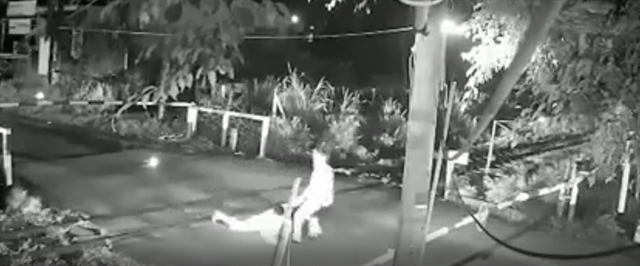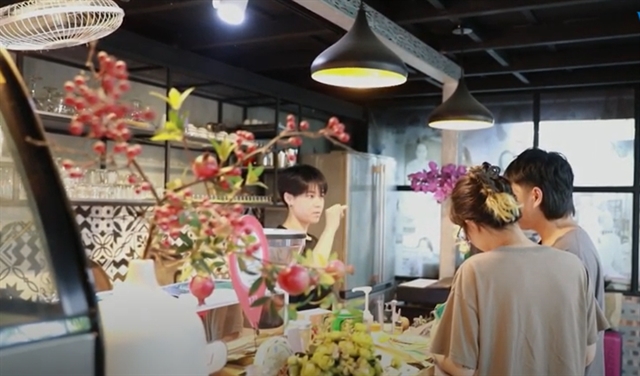
Thu Hà, Nhật Hồng & Bảo Ngọc
The Phúc Đức antique shop on Hà Nội's Tạ Hiện Street is commonly referred to as the "ancient fan museum" since it houses hundreds of European antique fans. The shop, as you might imagine, is very cool indeed.
The shop was founded by Trần Công Phúc, who spent years restoring and repairing antique fans, earning hundreds of millions of đồng in the process.
In 2012, Guinness Việt Nam named Phúc as the owner of the country's largest collection of vintage fans.
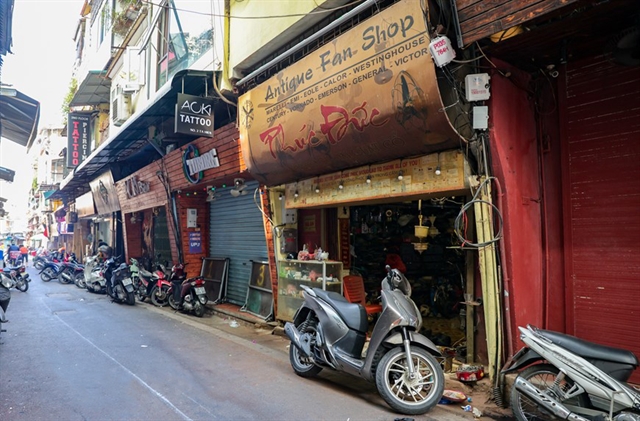 |
The Phúc Đức Antique Fan shop is tucked away on Hà Nội's Tạ Hiện Street. VNA/VNS Photo Minh Hiếu
After his death, Phúc's son, Trần Hồng Đức, and Phúc's apprentice, Nguyễn Văn Ngọc, continued his work.
{ "id": "DMkjL2hGqE", "type": "myToolVideo", "data": { "data": "" } }
{ "id": "iL6rLZWVtD", "type": "myToolVideo", "data": { "data": "" } }
Ngọc said that repairing antique fans was a key part of his life, given that he has worked here for nearly 20 years.
"I love this job. It suits my personality. I must confess that I'm not very quick, but I'm more of a person with meticulousness and creativity. With the same component, I can think of many different ways of using it. After thinking of a new way to perfect a component and assemble it into the fan to make it work well, I feel very satisfied and love this job more," he said.
"It's a lot of fun to fix up an old fan that's been damaged and give it a second chance at life, almost as if it were the original. It fills me with a sense of triumph and excitement."
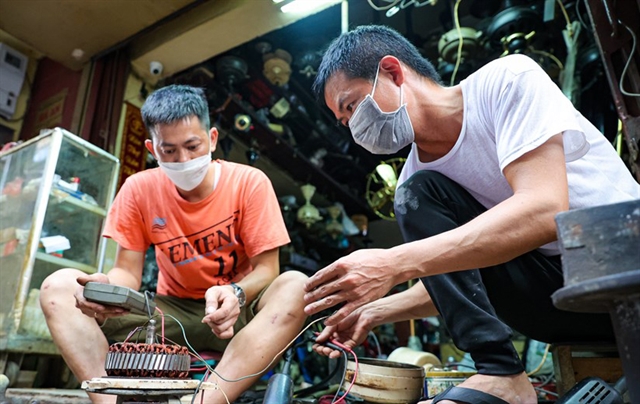 |
Trần Hồng Đức (left) and Nguyễn Văn Ngọc continued his work after the founder of the shop, Trần Công Phúc passed away. VNA/VNS Photo Minh Hiếu
According to the skilled technician, his job appears simple but requires much effort.
"Fixing these items is more sophisticated than fixing new ones. First it is because of its structure, and second because many parts are unavailable. When a new fan is broken, we can remove the broken parts and replace with new ones immediately, and then it will work again," he said.
"But it is hard to find alternative parts when it comes to these old fans. We even have to manually craft a new part or order to have a single one to be made, so usually, the costs are very high."
Antique fans take up the entire room. On the ceiling, the blades of the ceiling fans have been removed so that they can hang closer together and conserve more space. Under the floor, there is no place without fans and related equipment.
The vast majority of these fans were produced in the early part of the 20th century and originated from well-known manufacturers such as Marelli (Italy), Emi (Netherlands), and Eole (France).
In the past, the French exported fans to Việt Nam for use in manors and villas to cope with the country's hot and humid climate. These fans were mostly seen in the homes of the wealthy.
"There used to be very old fans, powered by steam engine. They do, however, have a new owner. Our oldest fans are currently those born between 1917 and 1919, the years in which the electric motor was first developed." Ngọc said.
The price of a Marelli fan that contains parts made from bronze can range anywhere from several million to hundreds of millions of đồng.
Ngọc said that due to the expensive price of the antique fans, the people interested in purchasing them were mostly the wealthy, hotels or vintage fan enthusiasts.
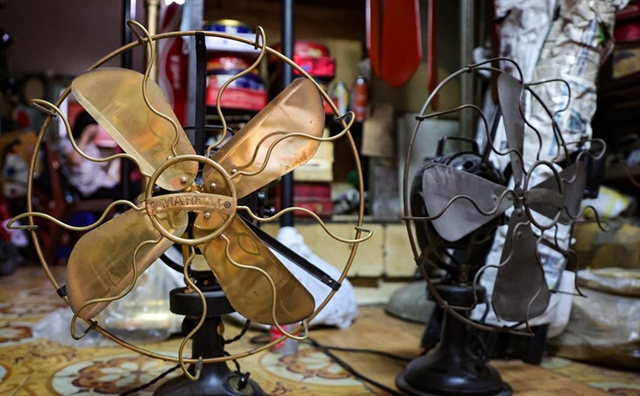 |
The price of a Marelli fan that contains parts made from bronze can range from several million to hundreds of millions of đồng. VNA/VNS Photo Minh Hiếu
"The most expensive fan we have sold cost VNĐ120 million. It had such a high price because of its rarity, longevity and special design. As you can see, the fans here are very expensive compared to the new ones. Table fans are about 3 million or more, and ceiling fans are about 7 million because they are rare and not available on the market anymore," he said.
"Our customers are usually middle-aged. Often they have nostalgia for antiques and living styles of the past. Vintage fans like these, in terms of colour or shape, are very suitable to be placed in spaces which remind us of the past. Therefore, they are the customers that we target." VNS


